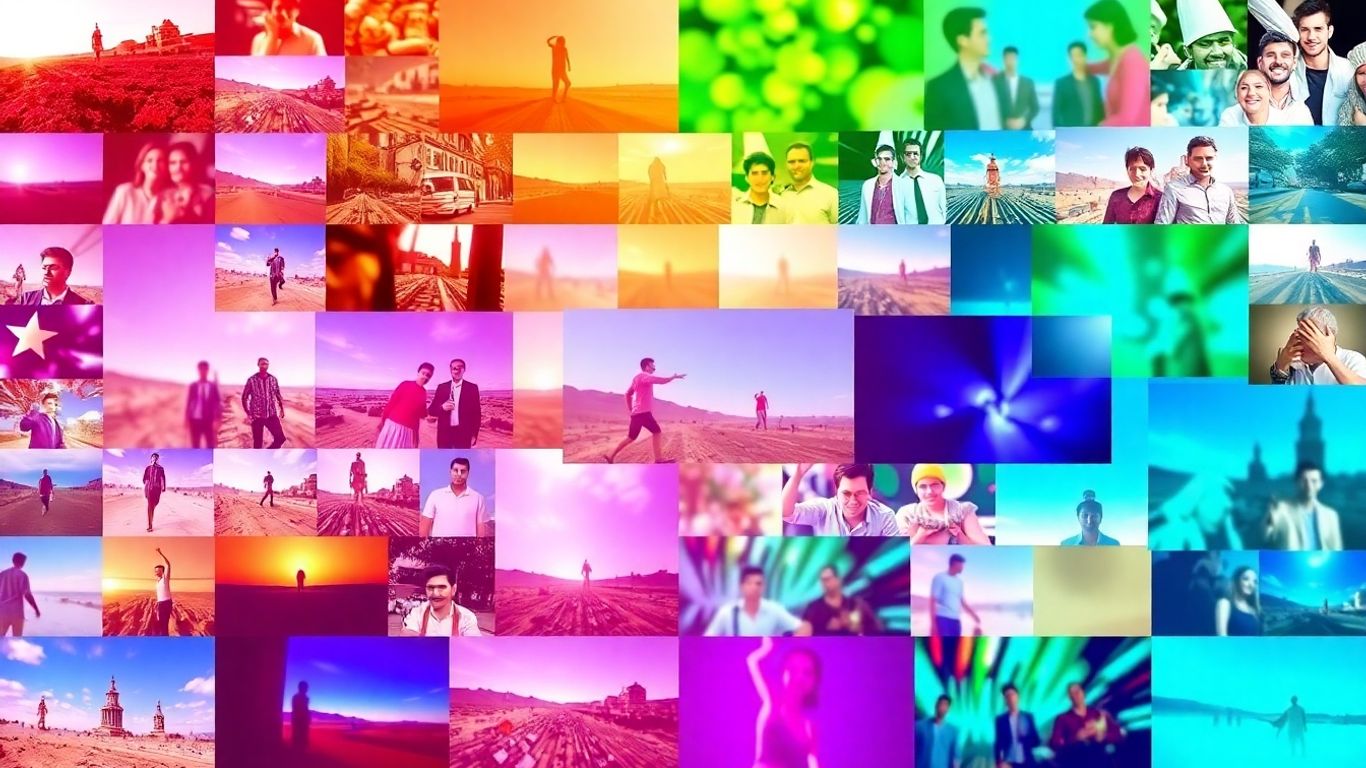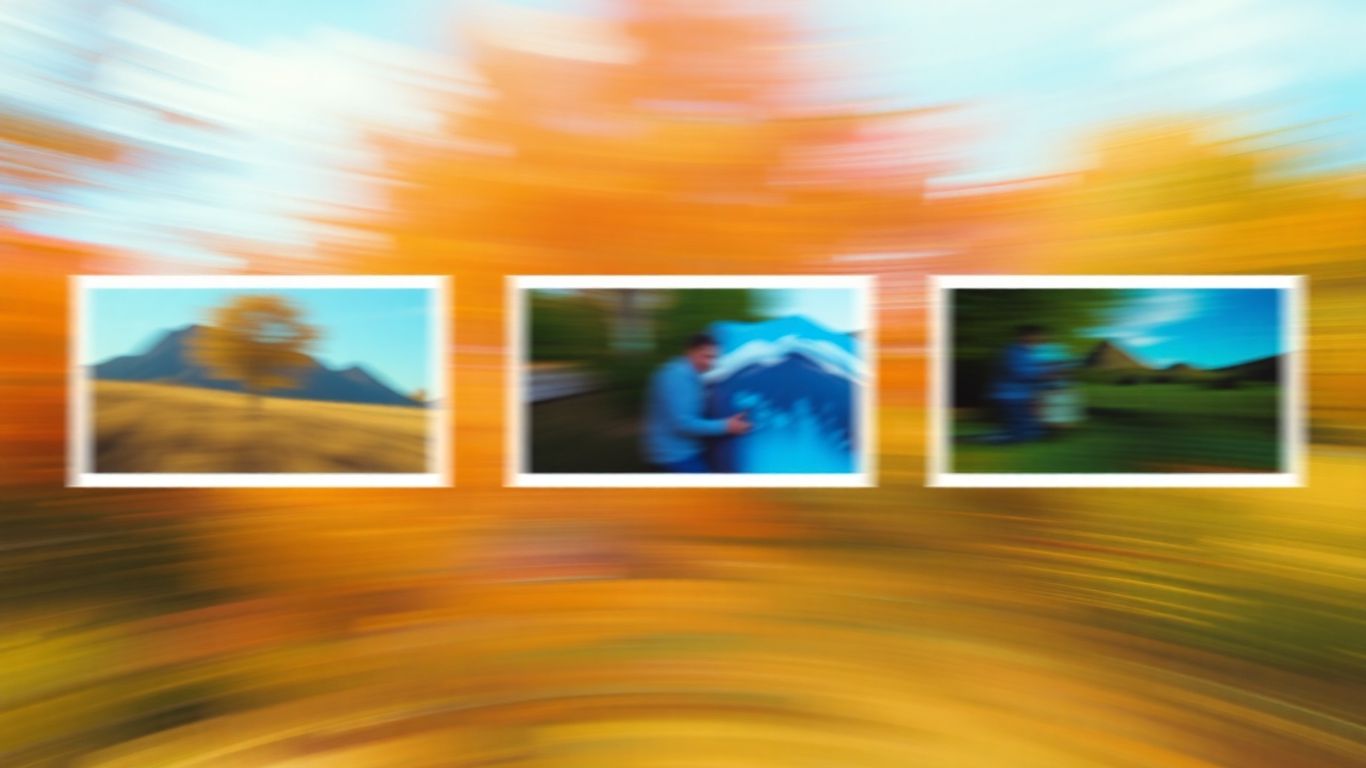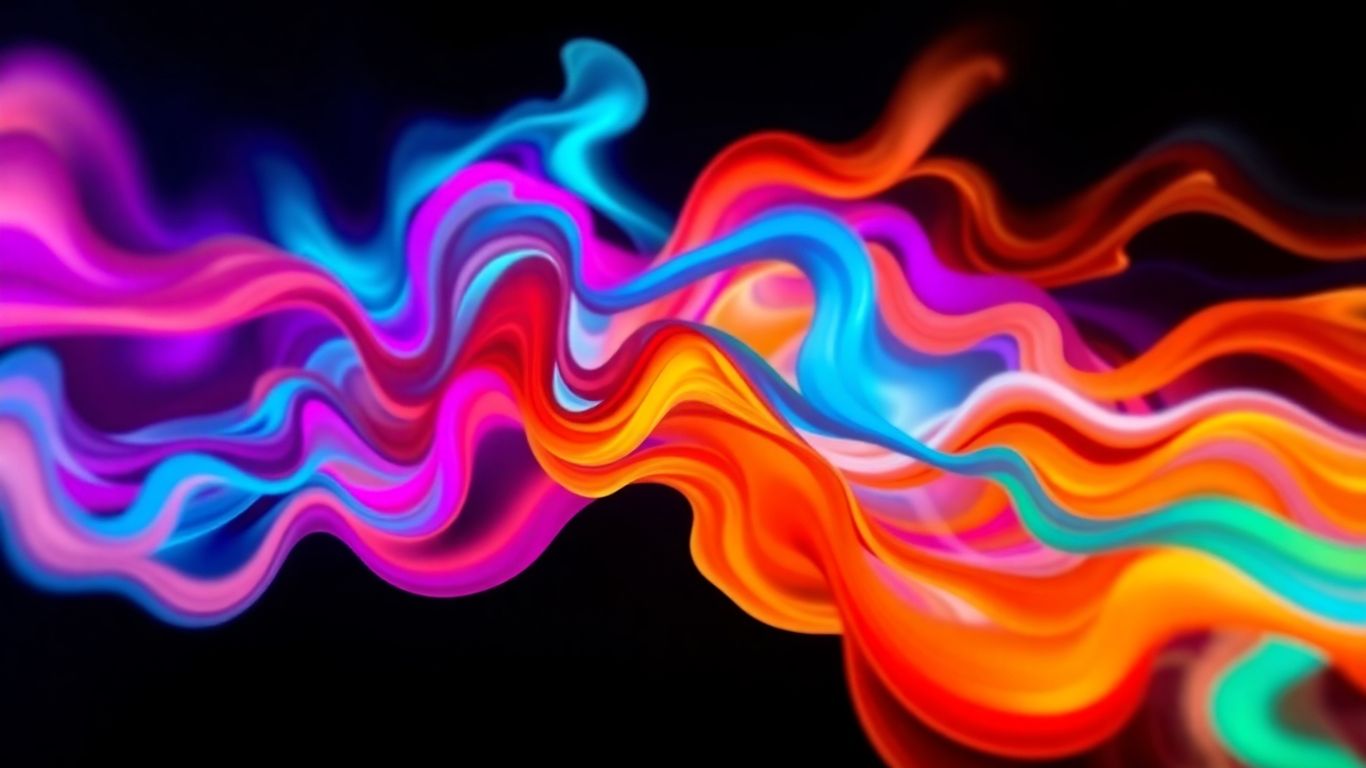Effortless Image to Video Conversion: Unleash Your Creativity

Ever look at a great photo and wish it could just… move? Like, a little bit? Well, now it can. Turning static pictures into short videos is getting super easy, thanks to some smart AI tools. You don't need to be a movie pro or spend hours fiddling with complicated software anymore. Just upload your image, maybe add a quick description, and watch it come to life. It’s a neat way to make your photos more interesting, whether for social media, a project, or just for fun.
Key Takeaways
- You can easily turn still images into short videos using AI.
- No special skills or software are needed for this image to video conversion.
- AI helps make the animations look natural and realistic.
- These tools are great for making social media content or marketing materials.
- Many online tools offer free and simple ways to convert your images to video.
Effortlessly Convert Images to Videos

Remember when making a video meant hours of editing, complex software, and maybe even hiring someone? Those days are fading fast. Now, you can take a simple picture and turn it into something that moves, all without breaking a sweat. It’s like magic, but it’s actually smart technology working behind the scenes.
Transforming Still Photos into Dynamic Content
Static images are great, they capture a moment. But sometimes, you want more. You want that picture of a waterfall to actually show the water flowing, or a portrait to have a subtle blink. This is where turning images into videos really shines. It adds a layer of life and motion that a flat picture just can't offer. Think about your social media feed – videos grab attention way more than photos, right? This is your shortcut to making content that pops.
The Magic Behind Image to Video Conversion
So, how does it work? It’s not really magic, it’s AI. These tools look at your image, figure out what’s in it – like a person, a landscape, or an object – and then they add motion. You can often tell the AI what kind of movement you want. Maybe you want the wind to rustle leaves in a tree, or a character to subtly move their eyes. The AI analyzes the image's depth and details to make the animation look natural, not just like a weird filter.
Unlocking Creative Potential with AI
This technology opens up a lot of doors for anyone who wants to create. You don't need to be a professional animator or spend a fortune on video editing software. If you have an idea and an image, you can probably make a video out of it. It’s about making video creation accessible to everyone, letting your imagination run wild without getting bogged down in technical stuff. It’s a game-changer for making your ideas visible.
Harnessing AI for Image to Video Creation
Intelligent Scene Analysis for Realistic Animation
AI is pretty good at figuring out what's in a picture these days. It can look at a photo and understand the objects, the background, and even the general mood. When you use an AI tool to turn that image into a video, it uses this understanding to make the animation look more natural. For example, if there's a person in the photo, the AI might make their eyes blink or their hair move slightly in the wind. If it's a landscape, it might add subtle movements like clouds drifting or leaves rustling. This intelligent analysis helps make the final video feel more alive and less like a simple slideshow. It's not just about making things move; it's about making them move in a way that makes sense for the scene.
Prompt-Based Control for Precise Vision
Sometimes, you have a very specific idea of how you want your image to animate. That's where prompt-based control comes in handy. You can give the AI specific instructions, like "make the water ripple" or "have the character smile." The AI then tries its best to follow these commands. It's like giving directions to a very talented, but sometimes literal, artist. You might need to try a few different prompts to get exactly what you're looking for, but it gives you a lot more control over the final output than just letting the AI do its own thing. It’s a way to guide the AI’s creativity to match your own.
AI-Powered Realism in Motion
What's really impressive is how AI can add realistic motion to static images. It's not just about adding a generic "animation effect." Advanced AI models can analyze the physics of how things move in the real world. They consider things like gravity, light, and texture to make the animation look believable. This means that a person's movement might have a natural weight to it, or fabric might drape realistically. The goal is to create videos that are not only visually appealing but also feel grounded in reality, even if the original image was completely still. It’s a big step up from older methods that often looked quite artificial.
Streamlining Your Video Production Workflow
Let's be honest, making videos can feel like a huge chore. You've got the images, you know what you want to show, but the actual process of turning them into a video? That's where things often get complicated and time-consuming. This is where the magic of image-to-video conversion really shines, making the whole thing feel way less daunting.
Fast and Effortless Conversion Process
Forget spending hours wrestling with complicated software. The beauty of these new tools is how quick they are. You upload your picture, maybe pick a style or add a simple text instruction, and the AI does the heavy lifting. It's like having a personal video editor on standby, ready to go at a moment's notice. You can go from a single photo to a dynamic video clip in just a few minutes, which is a game-changer for anyone on a tight schedule.
Saving Time and Resources on Video Projects
Think about how much time and money you've spent on video projects before. Hiring editors, learning complex software, or even just the sheer hours spent tweaking settings can add up. With image-to-video tools, you cut down on all of that. You don't need a big budget or a dedicated team to get professional-looking results. This means you can focus more on your creative ideas and less on the technical headaches.
No Animation Skills Required
This is probably the biggest win for most people. You don't need to be a whiz with animation software or understand complex motion graphics. If you can point and click, and maybe write a simple sentence describing what you want, you're good to go. The AI handles the intricate animation work, making sure the movement looks natural and fits the image. It really opens up video creation to everyone, regardless of their technical background.
Elevate Your Content with Stunning Visuals

Professional-Grade Video Quality
Forget grainy, low-resolution clips. When you convert your images to video using modern AI tools, you're often looking at output that rivals professional productions. These systems are built to analyze the details in your photos and intelligently add motion and transitions that look smooth and polished. Think crisp 4K resolution, vibrant colors, and cinematic effects that make your content pop. It’s like having a seasoned editor working behind the scenes, but it all happens in minutes.
Dynamic Social Media Content Creation
Social media feeds move fast, and static images can get lost in the scroll. Turning your photos into short, engaging videos is a game-changer for platforms like Instagram, TikTok, and YouTube Shorts. You can take a single product shot and add subtle movement, or transform a series of travel photos into a dynamic mini-movie. This kind of animated content naturally grabs more attention, leading to better engagement and a bigger audience.
Here’s how image-to-video can boost your social presence:
- Stop the Scroll: Animated visuals are inherently more eye-catching than still images.
- Tell a Story: Even a simple animation can add a narrative layer to your content.
- Increase Shareability: Engaging videos are more likely to be shared by your followers.
- Platform Optimization: Many platforms favor video content, potentially improving your reach.
Engaging Product Visuals and Marketing Ads
For businesses, especially smaller ones or startups, creating professional marketing materials can be expensive and time-consuming. Image-to-video conversion offers a cost-effective way to produce compelling visuals. You can animate product photos to showcase features from different angles, create dynamic banners for your website, or even generate short video ads for online campaigns. This technology makes high-impact marketing accessible without needing a big budget or a dedicated video production team.
The ability to quickly turn a static product image into a short, animated clip that highlights its best features is incredibly useful. It means you can test different visual approaches for ads without significant upfront investment, allowing for more creative experimentation and faster campaign launches.
Versatile Applications for Image to Video
It's pretty amazing how you can take a simple picture and turn it into something that moves. This technology isn't just for fun, though. It opens up a lot of doors for different kinds of projects.
Bringing Art and Illustrations to Life
Artists and illustrators can really benefit from this. Imagine a drawing you did, maybe a character or a landscape. Now, you can add subtle movements to it. Think about making the character's eyes blink, or the leaves on a tree rustle a bit. It gives your artwork a whole new dimension without you needing to learn complicated animation software. It's like giving your static art a gentle breath of life.
Creating Engaging Educational Materials
For teachers and students, this is a game-changer. You know those diagrams in textbooks, or maybe an infographic you made? Turning those into short videos can make learning much more interesting. Instead of just looking at a static image of the water cycle, you can have a video showing the water moving through the stages. It helps people understand things better when they can see them in action.
Here are a few ways educators can use it:
- Transforming historical photos into short, animated timelines.
- Animating scientific diagrams for biology or physics lessons.
- Creating dynamic maps for geography classes.
Personalized Videos for Friends and Family
And of course, there's the personal touch. Got a bunch of photos from a birthday party or a vacation? You can easily string them together into a video with some gentle motion. It makes sharing memories feel more special than just sending a slideshow. You could even animate a drawing your kid made into a little cartoon. It's a really nice way to create something unique for people you care about.
Choosing the Right Image to Video Tool
So, you've got your images ready and you're excited to turn them into videos. That's great! But with so many options out there, how do you pick the one that's actually going to work for you without causing a headache? It’s not just about finding a tool; it’s about finding the right tool. Think of it like picking a kitchen gadget – you want something that does the job well, is easy to use, and doesn't take up too much space (or in this case, your time and sanity).
User-Friendly Interface and Simple Steps
When you're looking at different image-to-video converters, the first thing you'll probably notice is how they look and feel. A clean, straightforward interface makes a huge difference. You don't want to be hunting through menus or trying to figure out what a button does. Ideally, the process should be as simple as uploading your image, maybe picking a style or effect, and hitting 'create'. Most good tools will guide you through it, almost like a step-by-step guide. It’s like following a recipe – if the instructions are clear, you’re much more likely to end up with something delicious (or in this case, a great video).
Here’s a general idea of what the process usually looks like:
- Upload Your Image: Pick the photo or graphic you want to animate.
- Select Style/Effects: Choose how you want it to move or look. This could be anything from subtle animations to more dramatic effects.
- Adjust Settings (Optional): Some tools let you tweak things like speed, duration, or add text.
- Generate & Download: Let the AI do its magic and then save your new video.
Privacy and Security of Your Creations
This is a big one, especially if you're working with personal photos or sensitive project materials. You want to know that your files are safe. Look for tools that clearly state their privacy policy and how they handle your data. Are your uploaded images stored? For how long? Are they used for anything else? Most reputable services will encrypt your uploads and assure you that you retain full ownership of your content. It’s worth spending a few minutes reading up on this before you upload anything important. You wouldn't leave your personal diary lying around, right? Same idea applies here.
It’s easy to get caught up in the features and the cool animations, but don't forget the basics. A tool that respects your privacy and keeps your work secure is just as important as one that produces a high-quality video. After all, what’s the point of a great video if your original images end up somewhere they shouldn't be?
Free and Accessible Online Conversion
Let's be honest, cost is often a factor. The good news is that there are plenty of excellent image-to-video tools available online that are completely free to use. This means you can experiment and create without any financial commitment. Many of these free tools are surprisingly powerful, offering a range of styles and decent output quality. They often work directly in your web browser, so there’s no need to download any software, making them super accessible from almost any device with an internet connection. It’s a fantastic way to get started and see what’s possible without spending a dime.
Ready to Make Your Images Move?
So, there you have it. Turning your still photos into dynamic videos doesn't have to be complicated or expensive. We've seen how easy it is to take a picture and give it life with just a few clicks, whether you're making something for social media, a project, or just for fun. No fancy software or years of training needed. Give it a try and see what you can create. It's pretty cool what you can do these days without much fuss.
Frequently Asked Questions
How does this tool turn a picture into a video?
It uses smart computer programs, called AI, that look at your picture. The AI then figures out how things in the picture could move, like making a person blink or grass sway. You can even tell the AI what kind of movement you want using simple words!
What kinds of pictures work best?
Clear pictures with good detail work the best. Think of photos where you can easily see what's in them, like a person's face, a pet, or a cool landscape. Pictures that are not blurry or too dark give the AI more to work with.
How long does it take to make a video?
It's super fast! Most of the time, you can get your video in just a few minutes. It depends on how complex the picture is and how much the AI has to do, but it's way quicker than old-school video making.
Can I choose how the video moves?
Yes, you have a lot of say! You can type in words to describe the motion you want. For example, you could say 'the water flows' or 'the camera zooms in.' The AI tries its best to make your idea happen.
Do I need to be good at video editing?
Not at all! This tool is made for everyone. You don't need any special skills. Just upload your picture, maybe type a few words, and the AI does all the hard work for you.
Can I use the videos I make for my business?
Absolutely! You can use these videos for ads, social media, or your website. They help make your products or services look more exciting and can help you get more customers.

















